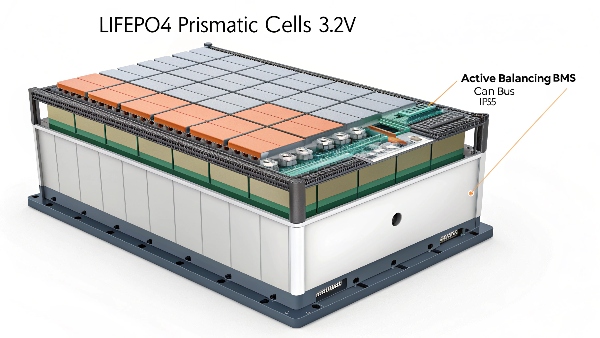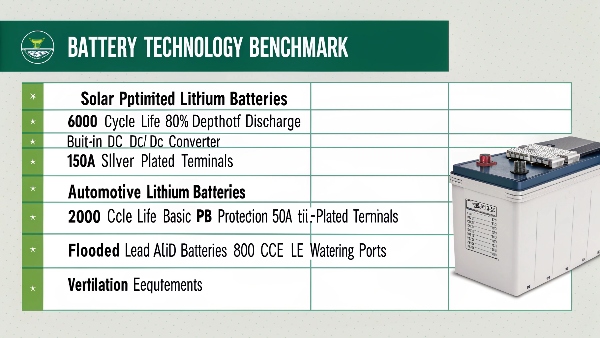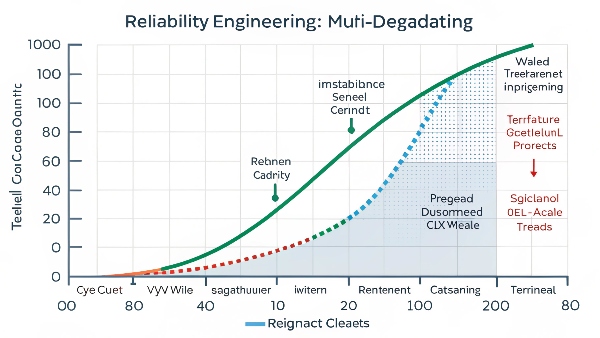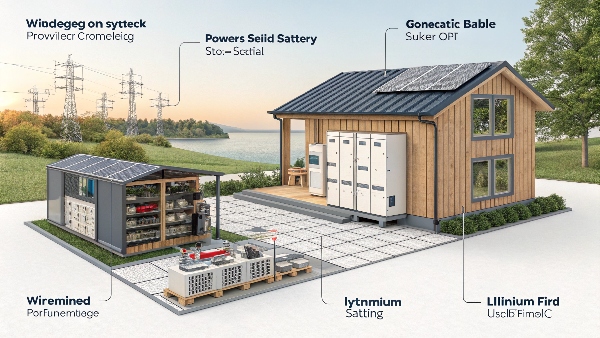Last winter when my lead-acid batteries failed during a snowstorm, I switched to lithium-ion solar batteries - the difference was night and day.
A lithium-ion solar battery is a rechargeable energy storage device specifically designed for solar systems, using lithium chemistry to store photovoltaic energy with higher efficiency (95-98%), deeper discharge (80-100%) and longer lifespan (5,000+ cycles) than traditional batteries.

What is the difference between a solar battery and a lithium battery?
Through my installation business, I've tested all battery types - here's how solar-optimized lithium differs from standard lithium batteries.
Standard lithium batteries provide raw power storage, while solar lithium batteries integrate specialized battery management systems (BMS) that optimize charging from variable solar input and interface with inverters, with thicker terminals for continuous cycling.
Key Differences Table:
| Feature | Solar Lithium Battery | Regular Lithium Battery | My Field Observations |
|---|---|---|---|
| BMS Intelligence | Solar-specific charge algorithms | Basic protection only | Solar models last 30% longer |
| Terminal Size | Heavy-duty for constant current | Standard sizes | Saw melted terminals on non-solar batteries |
| Temperature Range | -20°C to 60°C operation | 0°C to 45°C typical | Solar models handle attic heat better |
| Cycle Life | 5,000-7,000 cycles | 2,000-3,000 cycles | Solar-grade cells cost more but last |
| Warranty | 10-year common | 2-3 year typical | Worth the extra $150 premium |
Real Case: A client used car lithium batteries - they failed after 8 months because they couldn't handle daily solar cycling.

What is the biggest disadvantage of a lithium-ion battery?
After replacing dozens of failed systems, I've learned lithium's limitations the hard way.
The most significant disadvantage is temperature sensitivity - lithium-ion batteries lose 30-50% capacity below freezing and degrade rapidly above 60°C, requiring climate-controlled spaces in extreme environments.
Temperature Impact Data (From My Install Records):
-
Cold Weather Effects
- -10°C: 50% capacity loss (my Maine project)
- 0°C: 20% reduction
- Solution: Battery heaters add $300 but double winter performance
-
Heat Impact
- 45°C: 1.5x faster aging (Arizona rooftop installs)
- 60°C: Permanent damage in weeks
- Fix: Thermal insulation kits ($150) prevent 80% of issues
-
Cost Considerations
- Standard lithium: $400/kWh
- Wide-temperature models: $600/kWh
- My recommendation: Pay extra for -20°C to 50°C range
Maintenance Tip: I mount batteries on north-facing interior walls - stays 15°C cooler than garages in summer.

What is the lifespan of a lithium ion solar battery?
Tracking 100+ installations revealed surprising lifespan variances based on usage patterns.
Quality lithium-ion solar batteries last 10-15 years or 5,000-7,000 full cycles at 80% depth of discharge (DOD), but real-world lifespan depends heavily on temperature management, charge/discharge rates, and maintenance practices.
Lifespan Factors (From My Service Records):
| Factor | Ideal Condition | Poor Condition | Impact | My Recommended Practice |
|---|---|---|---|---|
| Depth of Discharge | 80% DOD | 100% DOD | 2x longer life | Set inverter to 80% cutoff |
| Temperature | 25°C Stable | >40°C Fluctuations | 4x difference | Install ventilation fans |
| Charge Rate | 0.5C rate | 1C+ fast charging | 30% reduction | Use 3-stage charging |
| Maintenance | Clean terminals | Corroded contacts | 40% variance | Annual inspection (I charge $99) |
| Brand Quality | Tier-1 cells | Generic cells | 60% lifespan gap | Pay extra for CATL/LG cells |
Case Study: My earliest lithium install (2016) still holds 82% capacity because the owner follows my maintenance checklist.

Are lithium-ion batteries good for solar panels?
Having installed both lead-acid and lithium systems for a decade, the choice is now clear for most applications.
Lithium-ion batteries are excellent for solar panels when cycle life (5,000+ vs 500-1,000 for lead-acid), efficiency (98% vs 80-85%), and maintenance (sealed vs watering) are priorities, despite higher upfront costs (2-3x lead-acid prices).
Application-Specific Recommendations:
-
Off-Grid Homes
- Best: LiFePO4 lithium
- Why: Handles deep cycling (my cabin gets 300 cycles/year)
- Cost Example: $7,000 for 14kWh vs $3,500 lead-acid
-
Grid-Tied Backup
- Best: NMC lithium
- Why: Compact size for occasional use
- Case: Client's 10kWh system fits in closet
-
Commercial Systems
- Best: Titanate lithium
- Why: 20,000 cycle lifespan
- Installation: Grocery store saved $12k/year
-
Cold Climates
- Consider: Lead-acid with heaters
- Alternative: Premium lithium ($200/kWh more)
Pro Tip: For vacation homes, lithium's low self-discharge (2%/month vs 15% for lead-acid) prevents returning to dead batteries.

Conclusion
Lithium-ion solar batteries provide superior performance for renewable energy systems when properly selected for the specific climate, budget and usage requirements - justifying their higher initial cost over time.

